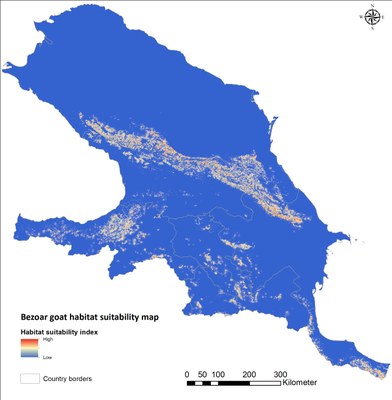Habitat analysis for bezoar goat (Capra aegagrus) and Armenian mouflon (Ovis orientalis gmelins) in the Caucasus
Hendrik Bluhm
Large mammals face an increasing risk of extinction in a human-dominated world, with habitat loss and over-hunting posing the main threats. Identifying measures for the protection of these animals, which play key roles in ecosystem functioning, requires consolidated knowledge about suitable habitats and specific habitat requirements. Species distribution models are important tools to analyze and predict potential distributions of threatened species and can thus support conservation decision making. The two Caprinae Bezoar goat (Capra aegagrus) and Armenian mouflon (Ovis orientalis gmelini) form an important part of the megafauna of the threatened biodiversity hotspot Caucasus ecoregion. Their populations have suffered drastic decreases over the past decades, and they are now mostly confined to small and isolated populations. Strong conservation actions need to be taken to ensure their long-term survival. In this study Maximum entropy species distribution modeling was used to (1) Map habitat suitability for Bezoar goat and Armenian mouflon over the Caucasus ecoregion, and (2) Analyze habitat characteristics for the two species, by assessing the importance of a range of variables for their distribution. Results show a strong dependence on highly rugged terrain for habitat to be suitable for the two species, and suggest that especially the Greater Caucasus Mountains bear enormous potential of currently unoccupied suitable habitat for both species. The habitat suitability maps highlight priority areas that deserve highest concern for further investigations and could represent candidate locations for potential reintroductions of the animals.

